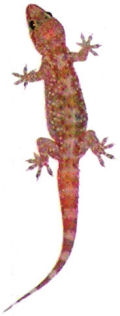Lizard Looping and Anoles
I have this video of me, standing in the patio of the Dallas apartment with my older daughter, and a little American Chameleon (Anolis carolinis) has hold of my finger in his tiny mouth and will not let go. No matter which way I turn my hand, that little guy is hanging on, biting as hard as he can, probably with the intention of eating me before I can eat him. Of course it didn’t hurt – it was barely a pinch – and Danielle and I were laughing about it.
I had not realized there were Anoles in Dallas, and it was a pleasant surprise. You see, back when I was a lizard hunting kid in California, the only place you’d see these exotic little color changers were in pet stores, and in advertisements in the back of Boy’s Life Magazine. Back then, my friends and I would all pool our money together and send away for them. I even remember the name of the company: The Louisiana Biological Center. I’d send them money, and then we’d wait … and wait … and wait for them to come in the mail.
Yes, the mail.
They’d arrive in a cardboard tube with cheesecloth at both ends. We’d order 12, but they’d send 15, just in case some died on the way. Open it up, dump it into a terrarium, and out would come 15 hopping lizards along with a bunch of moss and sometimes a sponge. We’d divvy them up and most wouldn’t survive more than a month or so. I had some that survived years, but eventually I’d let them go, which wasn’t as nice as it seems since they don’t live very well in Northern California. Too dry a climate.
The first time I’d actually caught one outside a postage container was during a trip to Hawaii. It pretty much ruined my Hawaiian trip because I then became obsessed with finding more of them. Ah, wasted youth.
So, as a father in North Dallas, and finding Anoles running wild in the suburbs, I took my kids lizard hunting on the trails along the local creek. Because of the lizard’s ability to jump into bushes and disappear, you can’t use the sneak-around-and-grab method which works with bluebellies in California. No, you have to go “lizard looping.” That is, you put a little loop of string in a slip-knot at the end of a stick (a fishing pole works perfectly) and, upon seeing a lizard, you reach out with this stick and put the loop around its head.
The lizard, you see, usually pays no attention to the stick or the loop, because it’s too busy watching the big monster creeping up on it (you). It doesn’t associate the stick with something you’re controlling. It just thinks it’s a branch, one of many surrounding it, and the loop is just like a blade of grass. That is, until the loop is around the lizard’s neck and you give it a little pop, closing the loop firmly around the neck and trapping it.
The last time I remember doing this, we caught several of them along the creek, and then riding our bicycles back toward the apartment complex my kids and I spotted a anole out on the pavement. It was rather odd, and so I rode slowly up to it and – swear to God, I have my kids as witnesses – the lizard jumped onto my pant leg and climbed up on me, and so I rode off with it clinging to my back. It stayed on me all the way home, and to this day it remains the one lizard that caught me instead of me catching it.
My opinion is that it’s okay to catch and keep common native lizards, especially if you catch them in your own neighborhood, and when you’re finally bored with them (or realized you just don’t have the patience to feed them several times a day) you can let them go again right outside and they’ll do just fine.
The odd thing is, anoles were everywhere in Dallas, a suburban area, but now that I live up in McKinney which is rural and right next to open woods, there’s none. In fact, I’ve been here years now and I only recently saw my first lizard, a small red-tailed skink, while walking through the woods.
From Tales of the Lizard Hunter
By Jerry J. Davis
